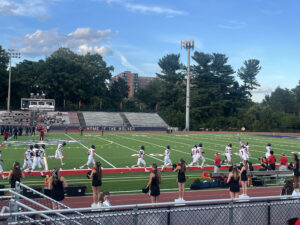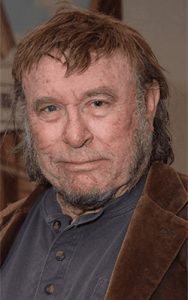Kate Walker, environmental programs coordinator for the City of Falls Church, stressed in remarks to the F.C. City Council last week that the draft new chapter in the City’s Comprehensive Plan on the environment will have a very different thrust than contained in the current version drafted in 2005.
The new version of the chapter, tentatively entitled, “Environmental Sustainability and Resilience: the Natural Resources Chapter of the City’s Comprehensive Plan,” which is intended to look forward for the next 40 years or so, will shift the priority from preservation to “adapting to change,” the changes that are expected due to population growth, development, and especially anticipated climate change impacts.
The draft chapter Walker presented last week included the following paragraph, “As the City continues to develop and adapt to a rapidly changing environment, its environmental goals must go beyond protecting and improving its existing natural resources. The City must also integrate the intentional use of natural resources in development and transportation infrastructure systems. The use of ‘green infrastructure’ in development will help us create a vibrant and healthy urban ecosystem that will enhance resilience and community quality of life.”
It notes that “green infrastructure” is defined as “using vegetation, soils and other elements and practices designed to protect, restore or mimic natural processes to manage and improve water and air quality.”
The immediate response from Council members focused on the current urgent needs for environmental reforms given the increased burden of stormwater runoff from the demonstrably greater instances of “100 year” storm events that have overwhelmed the City’s stormwater systems currently.
“We need a heavier hand on the scale to meet the goals of commercial development and stormwater runoff needs,” said Councilman Phil Duncan. He cited the report noting that while there are 129 single family homes in the City that have undergone redevelopment in the last four years, creating a notable impact on the community, there are over 2,000 residential properties in the community that are looking at considerable natural market incentives for redevelopment.
The impact of that over the coming two decades will be mighty, he noted, but added that with development, residential as well as commercial, come fresh opportunities for instituting new policies and strategies to mitigate the impact of climate changes that, he pointed out, involve instabilities that include both warming trends and cold.
The draft chapter notes that “redevelopment is a welcome process economically. It creates opportunities to update architecture to reduce energy use and stormwater runoff. However, land disturbance affects soils, vegetation and water management. Failure to plan for the preservation and integration of green space in redeveloped areas can result in the loss of tree canopy and its many environmental benefits. Loss of green space also increases stormwater runoff and associated water pollution, and loss of wildlife habitat and native plants.”
It adds that, therefore, “mitigation of the City’s contribution to climate change can be achieved through reduced greenhouse gas emissions. Strategies to enhance sustainability and resiliency will also be needed, including the construction of more energy efficient and environmentally integrated buildings.”
These and other goals are subsumed in the proposed new vision statement for the chapter which calls to “increase the resiliency and environmental sustainability of the City by protecting, enhancing and expanding the City’s natural resources, increasing the use of green infrastructure, reducing consumption and waste of both energy and materials, and using the latest building techniques to minimize environmental impacts and enhance community quality of life.”
Walter, at the meeting last week, stressed that trees and tree canopy can not only be the objects of efforts at environmental protection, but can also contribute to environmental sustainability, with a goal in the chapter to increase the tree canopy in the City from 46 to 50 percent coverage.
Councilman Ross Litkenhous, at the meeting last week, cited options like the daylighting of streams in Howard Herman Park, the advance of urban agriculture and methods for better stormwater retention on site.
Council member Letty Hardi said the City “should lead by example,” and find ways to increase its recycling programs by, for example, expanding them to include businesses in the City. She also said the City could follow the example of Charlottesville to ban the use of the pesticide Roundup.
Mayor David Tarter agreed, saying that other pesticides should also be considered and to find ways to use Four Mile Run as a “community asset.”
Stormwater runoff improvements, he said, should address property values, public health and public safety.
Councilman David Snyder said the City should “get tougher” on air and water quality standards.
It was noted that the City’s Environmental Sustainability Council has “requested substantial rewording of the draft chapter and incorporation of all goals identified for implementation by 100 percent of participating jurisdictions in the Metropolitan Washington Council of Government’s Climate and Energy Action Plan.”
The goal is for the City Council to finally adopt the updated chapter in January 2020, with community meetings for the general public and reviews by City advisory boards and commissions, and work sessions by the Council and Planning Commission in the meantime.













